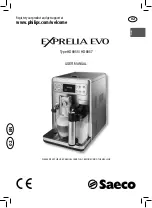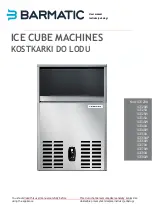
• Remove the plug from the mains socket before cleaning the device.
•
Never
immerse the motor unit in water or other liquids!
• Do not use corrosive or abrasive cleaning agents to clean the device. These could damage
the surface.
The plastic parts (mixing container or kneading spiral) may become discoloured as a result of
the addition of certain ingredients (e.g. vegetable juices containing a lot of colouring agent).
However, this is harmless and will not have any adverse impact on the flavour of your pasta.
The discolouration of plastic parts by ingredients containing a lot of colouring agent does not
constitute grounds for a complaint.
7.1. Dismantling the Device
Dismantle the device each time before you clean it so that you can clean all accessories with
warm water. If necessary, allow stubborn remnants of dough to soften for a little while in warm
water:
7.1.1. Unscrew the locking ring.
7.1.2. Remove the pasta attachement.
7.1.3. Open the lid by pressing together the locking clip and pulling the lid up at the same time.
Remove the lid.
7.1.4. Disengage the connecting piece by turning it anticlockwise (in the opposite direction to the
arrow marked on the mixing container).
7.1.5. Pull the connecting piece together with the dough screw conveyor and the kneading spiral
out of the mixing container.
7.1.6. Remove the kneading spiral from the drive shaft of the dough screw conveyor.
7.1.7. Remove the connecting piece from the dough screw conveyor.
7.1.8. Take the mixing container off the motor unit.
7.2. Cleaning
• All accessories (apart from the motor unit!) are dishwasher-safe.
• Clean all accessories (apart from the motor unit) in the dishwasher or by hand using warm
water and mild detergent. If necessary, soften the individual parts in warm soapy water so that
even more stubborn remnants of dough can be removed.
• Clean the motor unit with a slightly damp cloth and, if necessary, a little detergent. Wipe the
device dry with a clean cloth.
7.3. Storage
• Reassemble the device after cleaning once all of the individual parts have dried completely
(see the “Assembly” chapter).
• Store the device in a dry, clean place that is not accessible to children.
7. CLEANING AND STORAGE
8. TROUBLESHOOTING
If the device should stop working properly, first check whether you are able to correct the
problem yourself. If you are not, contact the customer service department.
Do not try to repair a faulty device yourself!
9
English










































